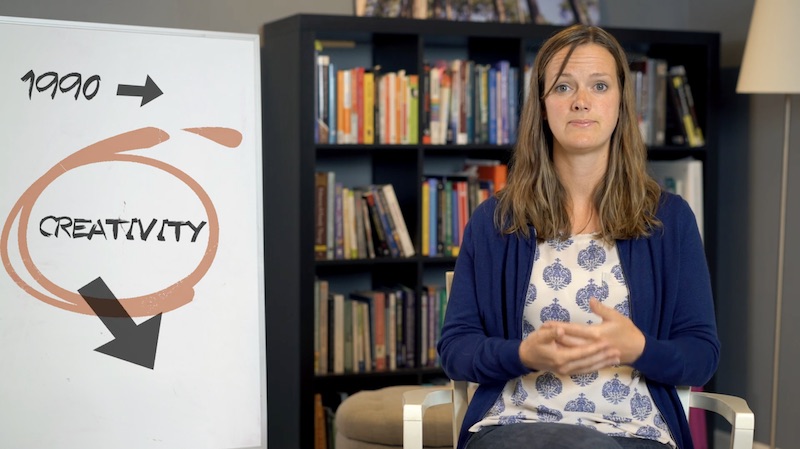Creativity Decline
Researchers have studied children’s creativity through national samples for decades. From the 1970’s to the 1990’s, on most measures, children’s creativity seemed to be experiencing small increases.
However, since the 1990’s, children’s creativity has been steadily declining. The researcher who analyzed this data has dubbed this the “Creativity Crisis,” (Kim, 2011). Dr. Kim said of the results, “The results indicated younger children are tending to grow up more narrow-minded, less intellectually curious, and less open to new experiences.”
Yeah, I would call that a crisis too.
What Promotes (and what Detracts from) Creativity?
Creativity Detractors
Experimental research from Canada suggests that television directly impacts children’s creativity. Researchers found that children who lived in an area with no television had higher scores on a measure of creativity compared with children who had access to television. However, once those creative kiddos got access to television, their creativity scores dropped to levels similar to the groups who also had television (Williams, 1986).
“Lean-back media,” in which the child passively consumes content (like watching videos) appears to be particularly problematic for creativity. There is a negative relationship between passive media use and creativity (Calvert & Valkenberg, 2013).
Research shows that the more time children spend watching television, the less time they spend in creative play. Specifically, on weekdays, for each hour of television viewed, young children experience a 9% decrease in time spent on creative play (Vandewater, Bickham, & Lee, 2006).
Creativity Promoters
Spending time outdoors, immersed in nature, has been shown to improve creative problem solving (Atchley, Strayer, & Atchley, 2012).
Pretend play is one of the key ways children can engage in original thinking, a marker of creativity. Time spent in quality fantasy play predicted creativity longitudinally (Russ, Robbins, & Christiano, 1999).

